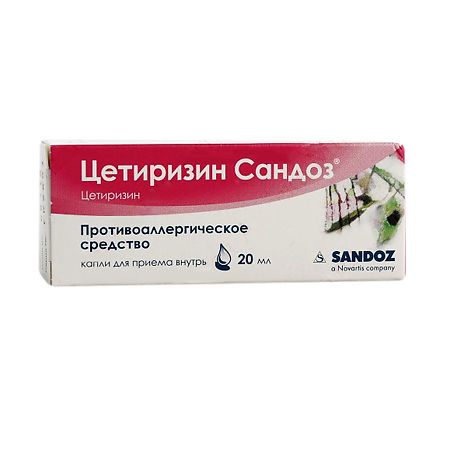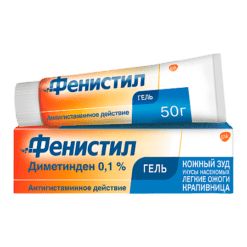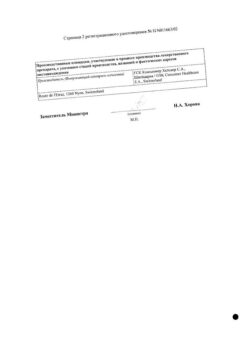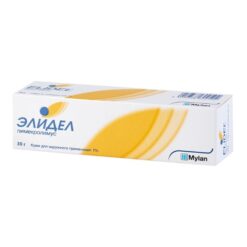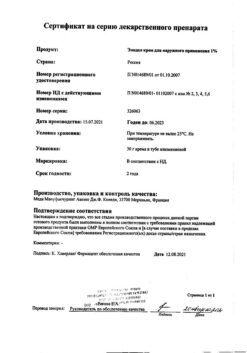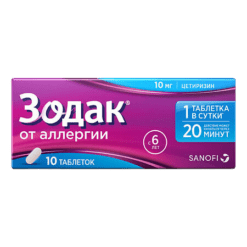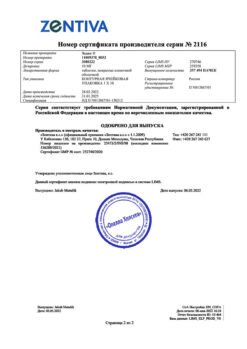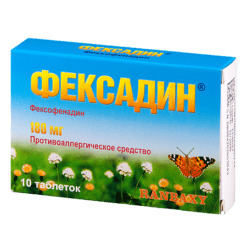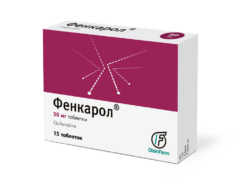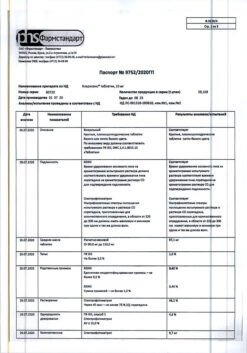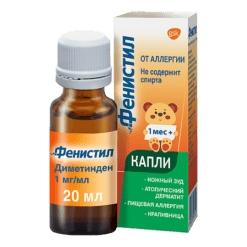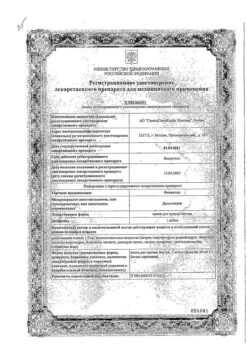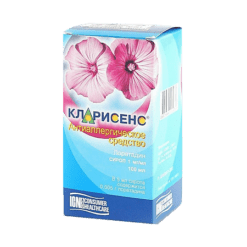No products in the cart.
Description
Pharmacodynamics:
Cetirizine has a pronounced anti-allergic effect. It practically has no sedative effect in pharmacologically active doses, belongs to selective antagonists of H1-histamine receptors and practically has no anticholinergic and antiserotonin action, prevents development and facilitates allergic reactions. It has antipruritic and antiexudative effects.
It affects the early stage of allergic reactions and decreases migration of inflammatory cells; it inhibits release of mediators involved in late allergic reactions. Reduces capillary permeability, prevents the development of tissue edema, relieves smooth muscle spasm. It eliminates the skin reaction to the introduction of histamine, specific allergens, as well as to cooling (in cold urticaria). Cetirizine significantly reduces the hyperresponsiveness of the bronchial tree, which occurs in response to the release of histamine in patients with bronchial asthma. The therapeutic effect of the drug appears on average in 60 minutes after intake. Tolerance does not develop during a course of administration.
Pharmacokinetics:
Intake: After oral administration cetirizine is quickly and well absorbed from the gastrointestinal tract. The maximum level of concentration is determined after about 40 – 60 minutes.
Food intake has no significant effect on the magnitude of absorption, but in this case the rate of absorption is slightly reduced.
Distribution: Cetirizine binds with blood plasma proteins by approximately 93%. The volume of distribution (Vd) is low (0.5 l/kg), the drug does not penetrate inside the cell.
The drug does not penetrate through the blood-brain barrier.
Metabolism: Cetirizine is weakly metabolized in the liver to form an inactive metabolite.
In 10-day use at a dose of 10 mg, accumulation of the drug is not observed.
Elimination: About 70% is excreted by the kidneys mostly unchanged.
The value of systemic clearance is about 54 ml/min.
After a single single single dose the half-life is about 10 hours. In children aged 2 to 12 years, the half-life is reduced to 5-6 hours.
In patients with impaired renal function (creatinine clearance less than 11-31 ml/min) and in patients on hemodialysis (creatinine clearance less than 7 ml/min) the value of half-life is increased by 3 times, clearance is decreased by 70%.
In chronically ill and elderly patients half-life is increased by 50% and clearance decreased by 40%.
Hemodialysis is ineffective.
Indications
Indications
Active ingredient
Active ingredient
Composition
Composition
1 ml of drops for oral administration contains:
the active ingredient:
cetirizine dihydrochloride 10 mg,
excipients:
benzoic acid, 2 mg;
glycerol 85%, 125 mg;
propylene glycol, 125 mg;
distilled water – 763, 6 µl;
sodium acetate trihydrate – 15 mg
How to take, the dosage
How to take, the dosage
Ingestion, regardless of meals.
Adults and adolescents over 12 years of age are recommended to take 20 drops (10 mg) daily, preferably in the evening.
For children aged 6-12 years, 10 drops (5 mg) twice daily in the morning and evening or 20 drops (10 mg) in the evening.
For children aged 2-6 years, 10 drops (5 mg) in the evening or 5 drops (2.5 mg) in the morning and evening.
In children aged 1-2 years, 5 drops (2.5 mg) twice a day.
In case of renal insufficiency, the recommended dose should be reduced by half.
In case of impaired liver function, the dose should be adjusted individually, especially with caution in concomitant renal failure.
Elderly patients with normal renal function do not need dose adjustments.
The duration of treatment is determined individually; usually, if seasonal allergic rhinitis occurs, the duration of therapy is 3-6 weeks; however, even a week is sufficient for short-term exposure to pollen.
Interaction
Interaction
No clinically significant interactions of cetirizine with other medicinal products have been established.
The co-administration with theophylline (400 mg/day) leads to decreased total clearance of cetirizine (the kinetics of theophylline is not changed).
Special Instructions
Special Instructions
During treatment it is necessary to refrain from potentially hazardous activities requiring increased concentration and quick psychomotor reactions.
The concomitant use of drugs that depress the central nervous system and the use of alcohol are not recommended.
Contraindications
Contraindications
With caution: moderate to severe chronic pyelonephritis (dosage regimen adjustment is required), advanced age (decrease of glomerular filtration is possible).
Side effects
Side effects
Digestive system disorders: dry mouth, dyspepsia.
CNS disorders: headache, drowsiness, fatigue, dizziness, agitation, migraine.
Allergic reactions: skin rash, angioedema, urticaria, itching.
The drug is usually well tolerated. Side effects are rare and transient.
Overdose
Overdose
Symptoms: drowsiness, lethargy, weakness, headache, tachycardia, increased irritability, urinary retention, fatigue are possible (most often when taking 50 mg of cetirizine daily).
Treatment: symptomatic therapy is carried out. No specific antidote has been identified. Hemodialysis is ineffective. Gastric lavage is performed, activated charcoal is prescribed.
Pregnancy use
Pregnancy use
It is contraindicated during pregnancy and lactation.
Similarities
Similarities
Additional information
| Shelf life | 3 years. Opened bottle can be used within 6 months. |
|---|---|
| Conditions of storage | Keep out of the reach of children at a temperature not higher than 25 ° C. |
| Manufacturer | Lichtenheldt GmbH Pharmazoitische Fabrik, Germany |
| Medication form | oral drops |
| Brand | Lichtenheldt GmbH Pharmazoitische Fabrik |
Related products
Buy Cetirizine Sandoz drops 10 mg/ml, 20 ml with delivery to USA, UK, Europe and over 120 other countries.

